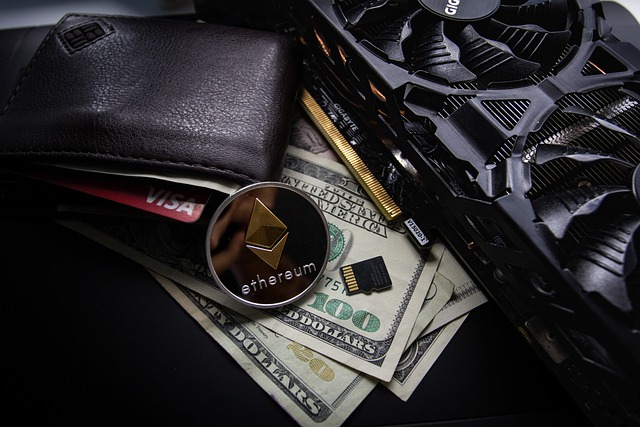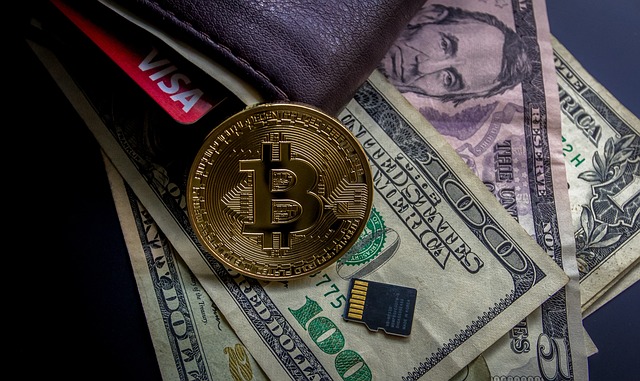XRP (Ripple) emerges as a standout crypto investment during stock market crashes due to its unique blend of efficiency, cost-effectiveness, and stability for cross-border transactions. Underpinned by the Ripple network, XRP enables real-time payments, positioning it as a potential hedge against traditional markets' volatility. Despite initial price drops in 2017-2018, XRP has shown remarkable resilience, attracting investors seeking safe haven during economic downturns. Its practical application and regulatory backing make XRP less volatile than other cryptocurrencies, offering a diversification strategy for uncertain market conditions. However, as with any investment, risks of substantial losses exist alongside potential gains.
“The Ripple (XRP) coin, often overshadowed by its more prominent peers, has carved out a unique niche in the crypto markets. This article delves into XRP’s distinct position, tracing its historical trajectory and performance during market downturns, key factors shaping its value, and its potential as a strategic crypto investment, especially during stock market crashes. We explore the risks and rewards associated with XRP and offer insights into its long-term prospects, providing investors with a comprehensive guide to this intriguing asset.”
- Understanding XRP and its Unique Position in Crypto Markets
- Historical Perspective: XRP's Journey and Market Performance During Crashes
- Factors Influencing XRP's Value: A Comprehensive Analysis
- Exploring the Relationship Between Stock Market Crashes and XRP Investments
- Risk vs. Reward: Evaluating XRP as a Potential Crypto Investment Strategy
- Long-term Prospects for XRP: What the Future Might Hold
Understanding XRP and its Unique Position in Crypto Markets

XRP, or Ripple, is a digital asset that has gained significant attention in the cryptocurrency space. Unlike many other coins, XRP isn’t just a store of value; it’s designed to facilitate fast and inexpensive cross-border transactions. This makes it particularly appealing for financial institutions looking to streamline international payments. In times of economic uncertainty, like during stock market crashes, crypto investments have emerged as a potential hedge against traditional markets. XRP, with its focus on efficiency and low fees, could play a crucial role in this regard, offering an alternative for businesses and individuals seeking faster and more cost-effective global transaction solutions.
The unique position of XRP in crypto markets is further enhanced by its underlying technology, Ripple’s distributed network. This network allows for real-time transactions, making it an attractive option for those looking to diversify their portfolios with a stable and efficient digital asset. As the demand for quicker and more affordable international transactions grows, so does the potential for XRP to become a primary driver in this space, especially during periods of market volatility when traditional financial systems may face challenges.
Historical Perspective: XRP's Journey and Market Performance During Crashes

XRP, or Ripple, has a unique historical perspective in the crypto market, especially during tumultuous times. When many digital assets struggle to maintain their value, XRP has shown resilience and even gained ground following significant crashes. During the 2017-2018 crypto winter, when most tokens experienced sharp declines, XRP only dropped slightly before rebounding quickly. This behavior highlights its potential as a stable crypto investment during stock market crashes.
The ability of XRP to withstand such events can be attributed to its underlying technology and use case. Ripple’s focus on facilitating cross-border payments has made it a reliable option for financial institutions, ensuring steady demand even in volatile markets. As investors seek safe havens during economic downturns, this stability could make XRP an attractive crypto investment choice, especially when compared to more speculative assets.
Factors Influencing XRP's Value: A Comprehensive Analysis

XRP, the native cryptocurrency of Ripple’s payment protocol, has seen its fair share of price fluctuations in the volatile world of crypto. Several factors play a significant role in determining XRP’s value, especially during uncertain times like stock market crashes. One of the primary drivers is the overall sentiment towards digital assets; during market downturns, many investors seek refuge in cryptocurrencies as a hedge against traditional market risks. This shift can drive demand for XRP, pushing its price higher.
Another crucial aspect is regulatory developments and partnerships. Ripple has established strategic alliances with various institutions, which can positively impact XRP’s value. Additionally, favorable regulatory environments for crypto adoption may boost investor confidence, leading to increased trading volumes and potential price appreciation. In contrast, negative news or regulatory changes might have the opposite effect, causing prices to drop. The crypto investment landscape during stock market crashes is dynamic, and XRP’s fate often intertwines with broader market trends and investor sentiment.
Exploring the Relationship Between Stock Market Crashes and XRP Investments

When discussing crypto investments during stock market crashes, XRP (XRP) stands out as a unique case study. Historically, cryptocurrencies have often been seen as a safe haven during periods of economic volatility, with investors looking to diversify their portfolios away from traditional stocks. In this context, XRP’s relationship with the stock market is particularly intriguing. During significant stock market crashes, XRP has shown resilience and sometimes experienced growth, challenging the notion that crypto is inherently volatile.
This dynamic can be attributed to several factors. Firstly, XRP’s underlying technology, Ripple, focuses on cross-border payments, making it a practical solution for investors seeking stable assets. Secondly, the cryptocurrency market’s inherent decoupling from traditional financial markets allows XRP to react differently during crashes. As investors flee riskier assets, they often turn to crypto as a potential hedge, which can drive up demand for stablecoins like XRP, enhancing its value in turbulent times.
Risk vs. Reward: Evaluating XRP as a Potential Crypto Investment Strategy

When considering crypto investments, especially during volatile periods like stock market crashes, it’s crucial to balance risk and reward. XRP, or Ripple, offers a unique proposition in this regard. As one of the top cryptocurrencies by market cap, XRP has established itself as more than just a digital asset; it serves as a bridge for global financial transactions, providing an efficient and cost-effective solution for cross-border payments.
This stability and practical application make XRP an attractive option for investors looking to diversify their portfolios during uncertain market conditions. While cryptocurrency markets are inherently volatile, XRP’s utility and regulatory backing could mitigate some of the risks associated with more speculative coins. However, as with any investment, there’s no guaranteed path to success; the potential for significant gains comes hand-in-hand with the possibility of substantial losses. Evaluating these factors is essential before adopting a crypto investment strategy focused on XRP or other assets during market crashes.
Long-term Prospects for XRP: What the Future Might Hold

The long-term prospects for XRP, the native cryptocurrency of Ripple, have been a topic of interest for many crypto enthusiasts and investors, especially during periods of market volatility. In times of economic uncertainty, such as stock market crashes, investors often seek alternative assets, including cryptocurrencies, as a hedge against inflation and currency devaluation. This has led to increased scrutiny and potential for XRP as a viable option in the crypto space.
Ripple’s technology and network aim to facilitate fast and low-cost cross-border payments, making it an attractive solution for financial institutions looking to streamline their international transactions. With its growing adoption by major banks and financial companies, XRP could play a significant role in shaping the future of global finance. The resilience shown during past market downturns suggests that XRP might be a solid investment choice for those considering crypto as part of their portfolio diversification strategy, especially during stock market crashes.
In conclusion, while XRP’s value is influenced by various factors, its unique position in crypto markets and historical resilience during crashes make it an intriguing option for investors considering a long-term strategy. Understanding the interplay between stock market dynamics and crypto investments is crucial, as events like past crashes can shape opportunities. Evaluating risk and reward, investors can decide if XRP aligns with their crypto investment goals. The future of XRP remains promising, with potential for growth in a rapidly evolving digital landscape.
